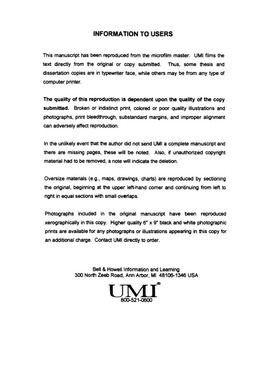| dc.contributor.advisor | Tiab, Djebbar, | en_US |
| dc.contributor.author | Cline, Scott Bradley. | en_US |
| dc.date.accessioned | 2013-08-16T12:30:46Z | |
| dc.date.available | 2013-08-16T12:30:46Z | |
| dc.date.issued | 1999 | en_US |
| dc.identifier.uri | https://hdl.handle.net/11244/5894 | |
| dc.description.abstract | The research also introduces some novel approaches to estimating, from field production data, the simulation reservoir properties such as oil-water and gas-oil relative permeability relationships, PVT properties, and capillary pressure in the absence of laboratory measurements. Semi-analytical two-phase analytic equations are also developed that approximate the two phase flow in solution gas reservoirs for use as a "quick-look" tool to validate simulation model design by comparing expected and actual simulation output. | en_US |
| dc.description.abstract | This research extends previously developed dimensionless decline type curve concepts and techniques to more general cases of varying reservoir shapes, well locations and anisotropic permeability conditions. Previous methods utilized only conditions of centrally located wells in radial reservoirs. These generalized decline curves are then modified for use with horizontal wells by incorporation of the equivalent well bore radius concept into the decline curve construction and display. | en_US |
| dc.description.abstract | Finally, the production rate decline characteristics of fractured reservoirs intersected by horizontal wells are studied through simulation experiments. Tables and graphs are produced that help classify each of four different fracture types through characteristic oil rate (q) vs. tune decline patterns, Deltaq/q vs. qcum/q, q vs. (tp + Deltat)/Deltat plots, and various derivatives such as rate-time, cumulative-time, Deltaq/q-time and Deltaq-time plots. Pressure data is purposely ignored in an effort to utilize only data that would be typically available to the practicing engineer. | en_US |
| dc.description.abstract | Extensive simulation experiments then demonstrate the effects of horizontal permeability anisotropy on well performance. The experiments confirmed the hypothesis that unless the reservoir is extremely large in comparison to the length of the horizontal well, deviation from permeability isotropy in the principal x and y directions will yield results that deviate from that predicted by commonly accepted traditional geometric mean averaging. The research shows that as the contrast in x and y permeability increases, while maintaining a constant geometric mean horizontal permeability, the simulated horizontal flow rates deviate increasingly from one another. This deviation does not occur when simulating vertical wells. Graphical relationships showing the effect of permeability anisotropy as a function of dimensionless well length, grid block spacing etc. are presented. | en_US |
| dc.format.extent | xxiii, 387 leaves : | en_US |
| dc.subject | Gas reservoirs Permeability. | en_US |
| dc.subject | Geology. | en_US |
| dc.subject | Rocks Fractures. | en_US |
| dc.subject | Oil reservoir engineering. | en_US |
| dc.subject | Engineering, Petroleum. | en_US |
| dc.title | Performance-decline curve analysis of vertical and horizontal wells in anisotropic and naturally fractured reservoirs. | en_US |
| dc.type | Thesis | en_US |
| dc.thesis.degree | Ph.D. | en_US |
| dc.thesis.degreeDiscipline | Mewbourne School of Petroleum and Geological Engineering | en_US |
| dc.note | Source: Dissertation Abstracts International, Volume: 60-11, Section: B, page: 5750. | en_US |
| dc.note | Adviser: Djebbar Tiab. | en_US |
| ou.identifier | (UMI)AAI9952411 | en_US |
| ou.group | Mewbourne College of Earth and Energy::Mewbourne School of Petroleum and Geological Engineering | |
